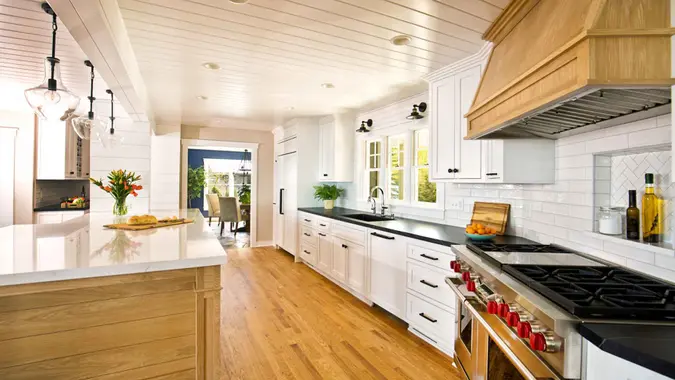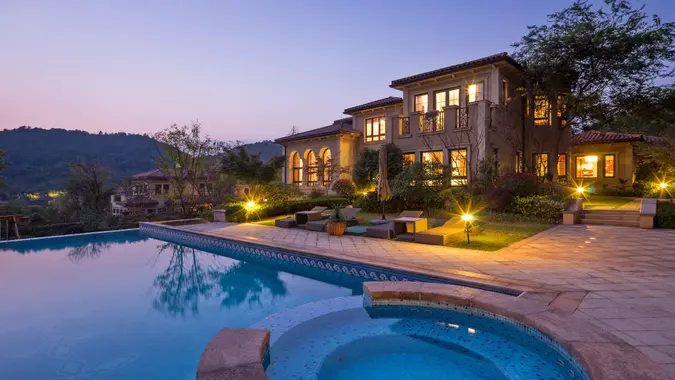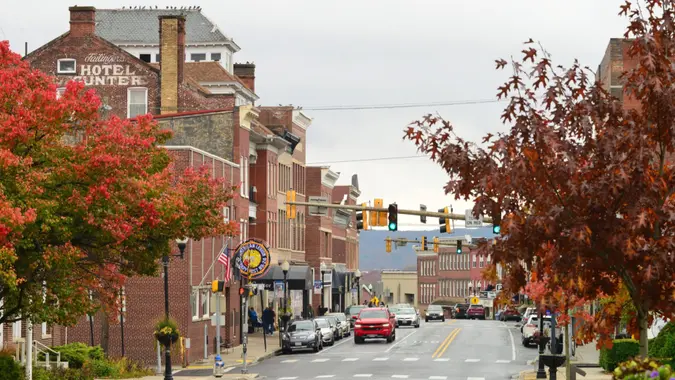What Would It Take To Make Homebuying Affordable for the Middle Class Again?

Commitment to Our Readers
GOBankingRates' editorial team is committed to bringing you unbiased reviews and information. We use data-driven methodologies to evaluate financial products and services - our reviews and ratings are not influenced by advertisers. You can read more about our editorial guidelines and our products and services review methodology.

20 Years
Helping You Live Richer

Reviewed
by Experts

Trusted by
Millions of Readers
Between home prices remaining high and an uncertain future for mortgage interest rates dropping, many middle-class homebuyers and sellers may wonder when or if the market will ever become affordable again.
While it’s true that most middle-class Americans won’t see the kind of easy entry markets their parents and grandparents did, there may still be some in roads.
Real estate experts weighed in on what it will take to make homebuying affordable for the middle class again.
The Tariff Conundrum
The current market is experiencing a lot of what Jeff Lichtenstein, CEO and broker at Echo Fine Properties called “a lot of damned if you do and damned if you don’t.”
He explained, “There is inflation going on right now because of the tariffs and deportations of labor which will affect building homes and maintenance of homes like putting on a roof or landscaping,” he said.
Those conditions make it harder for the Federal Reserve Board (the Fed) to lower rates as they said they would have done that already if not for the tariffs, Lichtenstein explained. “It also affects builders from putting up specs and building more which contributes more to the 4 million home shortage.”
A Drop in Mortgage Rates
That said, even a small mortgage rate drop could really shift things for the middle class. “Mortgage rates don’t have to go down much — 6% is the magic number,” Lichtenstein explained. He noted that when rates even got close to 6%, as they did last fall, “it spiked a lot of buying frenzy and then once rates went closer to seven, the buying stopped.”
The problem is that a lot of the buyers are sellers and the rate differential from 3% or 4% to 7% “is causing sellers to hang onto their precious interest rate like Gollum in ‘Lord of the Rings,'” he said. That clogs up the market.
Consider Tiny Houses
Another possible angle for those seeking affordability is tiny homes. “Tiny houses can be so much less expensive that it helps with young people purchasing because there’s less land needed and the cost of the structure is more affordable,” Lichtenstein said. “That could get the market moving.”
While some states and cities have good zoning for these small homes, others are still dragging their heels, and it may take legislation pushes to facilitate that change.
Boomer Downsizing
As baby boomers continue to downsize in their elder years or even move into assisted living, Lichtenstein believes that will start to free up homes. However, that could still take another six to seven years, as many boomers are still in their early 60s.
Subsidies and Tax Credits
Most of the changes mentioned above will be slow to have an impact. While government subsidies and tax credits may not change the overall affordability of homes generally, they do help close the gap for middle-class buyers, according to Paul Epperley, president at Greater Fort Worth Association of Realtors.
Down payment assistance and first-time homebuyer tax credits are especially helpful, he explained, since down payments are typically the most considerable financial burden or hurdle for those who are renting. “A grant to help cover a percentage of the down payment can get more people into their first home and first-time homebuyer tax credits also provide financial relief after the purchase.”
An ‘OBBB’ Tax Credit
Epperley pointed out that one of the most immediate impacts of the “One Big Beautiful Bill” (OBBB) is the restoration and extension of the mortgage insurance premium deduction, “a major benefit for first-time and low-down-payment homebuyers.”
Many buyers can only put down less than 20%, triggering private mortgage insurance (PMI), which can cost between $1,500 and $3,000 annually, Epperley explained. “By making these costs tax-deductible, the financial burden of homeownership is reduced and saves buyers potentially $2,000 or more each year.”
A Trifecta of Change
According to Jacob Naig, a licensed real estate agent, investor, contractor and owner of WeBuyHousesinDesMoines, the market needs “a three front correction: reform of zoning, the search for construction efficiencies and interest rate stabilization.” He said there is no “silver bullet” to move affordability without moving the others.
Depending on the state or locality, policy changes allowing for smaller lot sizes, duplexes and accessory dwelling units by right, could “immediately expand infill options without the need for new streets or schools,” Naig said.
Incentives for Builders and Developers
Another way to improve the market would be to offer incentives for builders and developers by expediting approval, decreasing or postponing impact fees and providing for tax incentives for the construction of homes below $300,000, Naig said.
Naig suggested that developers feel prohibited from building affordable homes due to a variety of high prices, including land prices, fees, code-compliance costs and labor shortages, which are all pushing break-even pricing above what middle-income buyers can afford. “Builders respond to economics. Shift the economics,” he said.
Property Tax Reforms
While every state has different approaches to property taxes, in some states, those taxes are exorbitant, according to Epperley. In Texas, for example, he said, “property taxes are one of the most significant pain points and appraisal values can jump year over year.” Property tax reform that caps or reduces property tax growth in states with high taxes could make a big dent for homeowners.
Wage Increases
A last way to make housing more affordable has little to do with the housing market at all, Naig suggested — that would be “to see consistent and meaningful wage increases above inflation.”
However, he’s clear that won’t happen without significant policy changes around minimum wage, benefits and labor incentives for housing.
Overall, it will take a variety of small changes, at the state and federal level, before some middle-class Americans can really call homebuying affordable again, and even then there’s no guarantee.
 Written by
Written by  Edited by
Edited by 

























